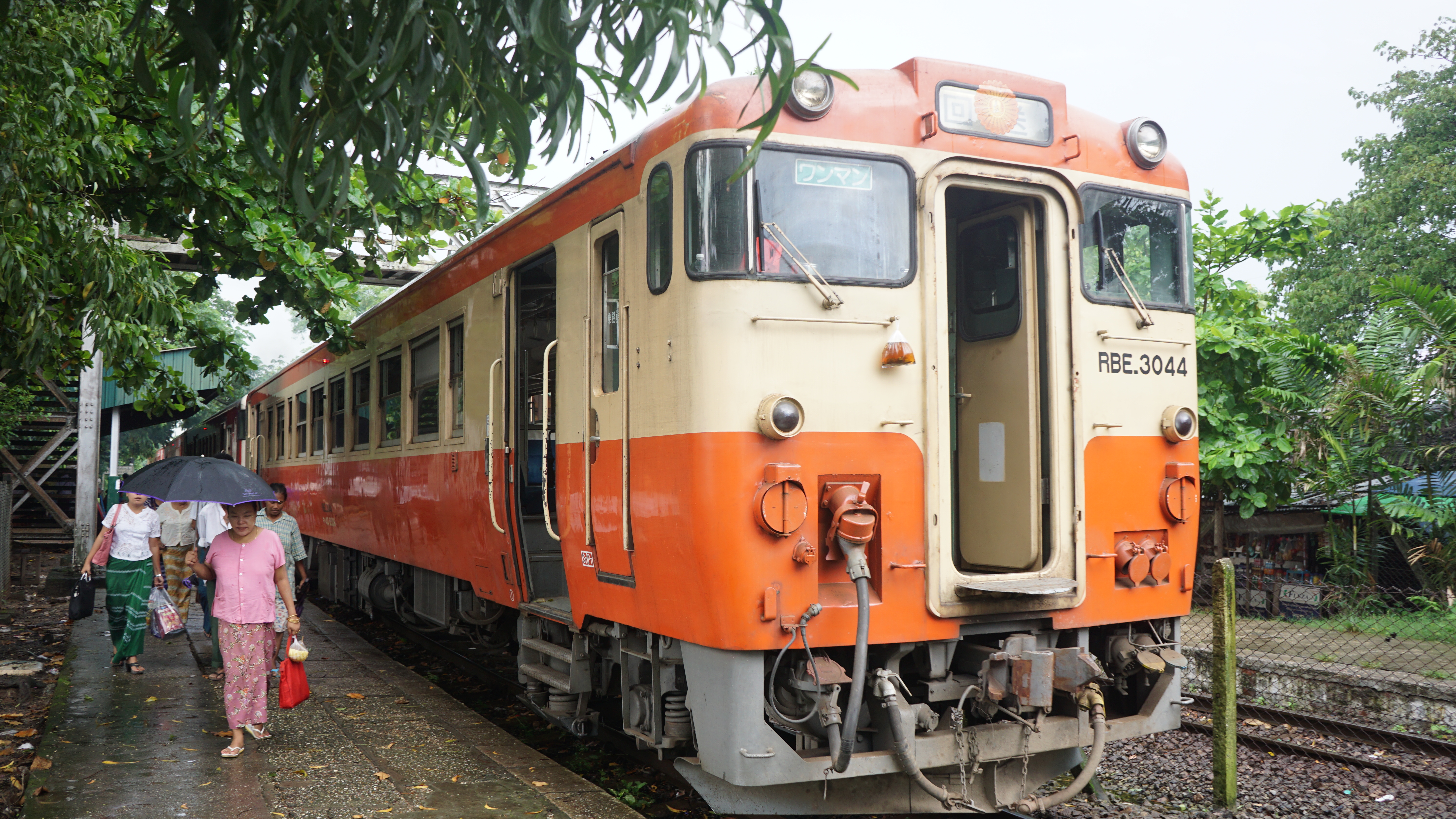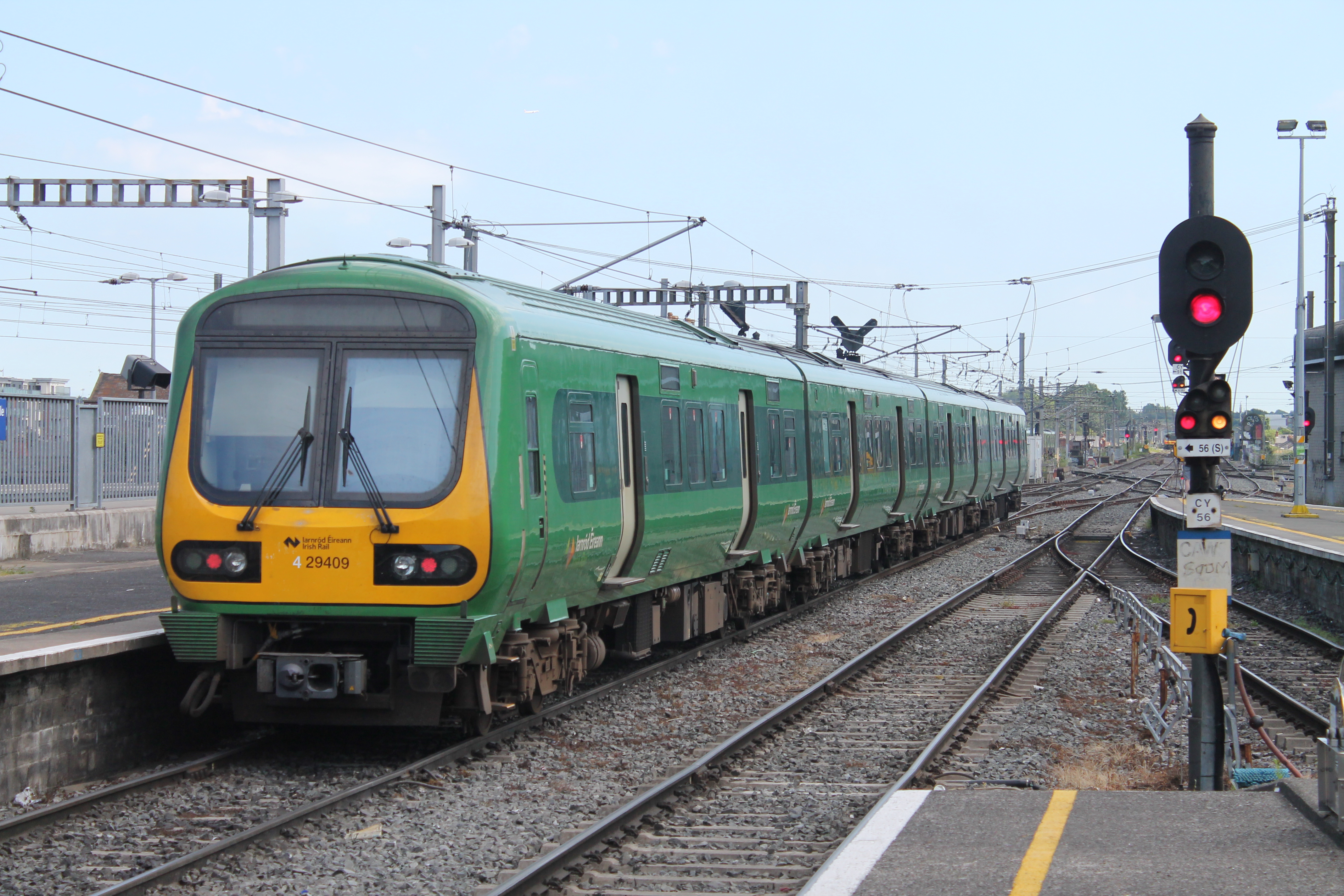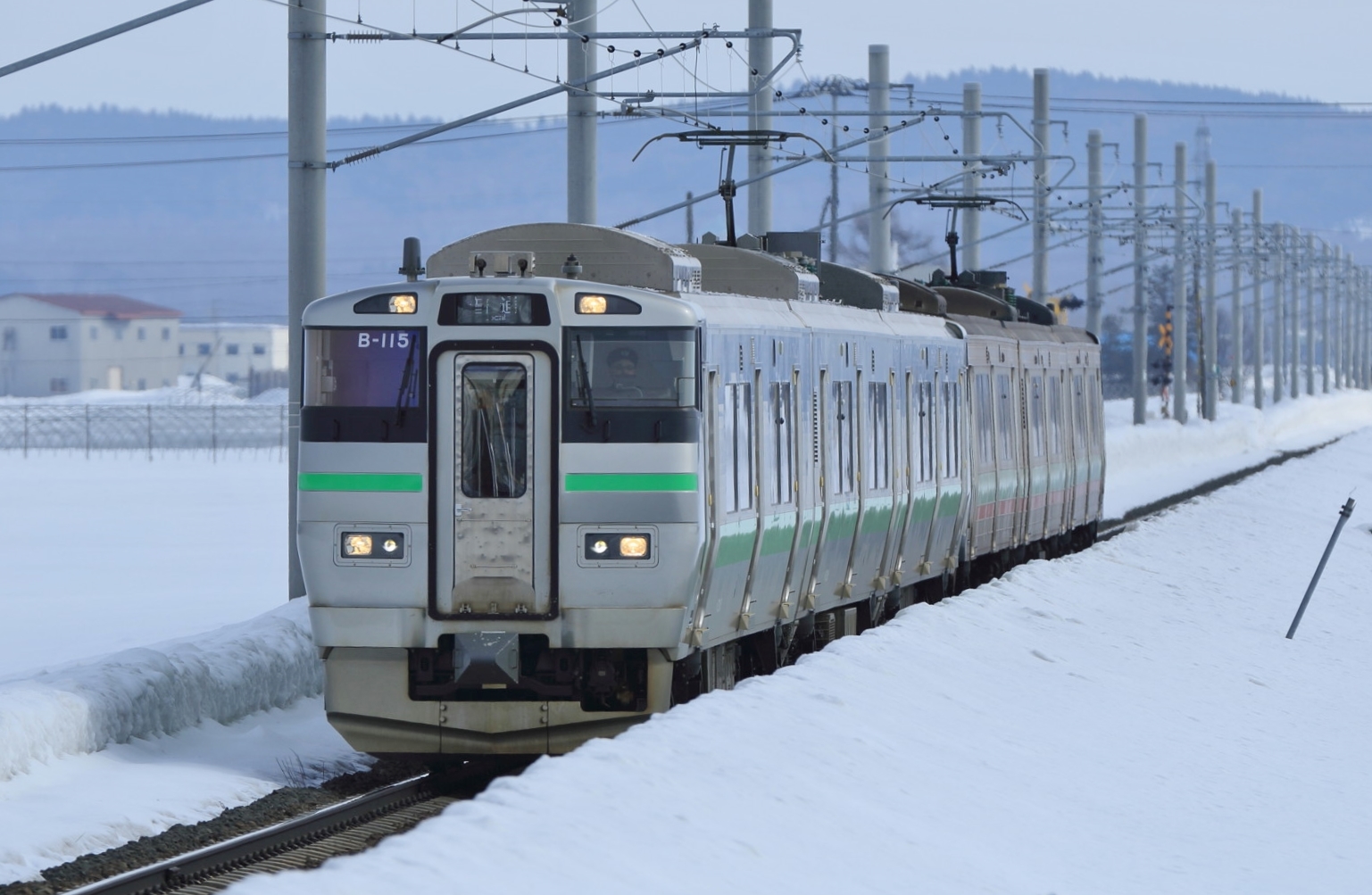|
Sasshō Line
The is a railway line in Japan operated by Hokkaido Railway Company (JR Hokkaido), which connects in Sapporo and in Tōbetu, Ishikari District. Its name is made up of two characters from and , the latter of which was the terminus of the line until it was relocated to Shin-Totsukawa in 1972. On 19 November 2016, JR Hokkaido's president announced plans to further rationalise the network by up to 1,237 km, or ~50% of the current network,. The non-electrified section of the Line was permanently closed on 17 April 2020. Stations All trains, include through trains from other lines, are local trains. Sometimes, trains may skip ROYCE' Town station (marked "◌"). Closed section Rolling stock As of April 2020, the following electric multiple unit (EMU) rolling stock is used on the Sasshō Line. * 721 series EMUs (since 1 June 2012) * 731 series EMUs (since 1 June 2012) * 733 series EMUs (since 1 June 2012) * 735 series EMUs (since 1 June 2012) File:JR Hokkaido 721 ... [...More Info...] [...Related Items...] OR: [Wikipedia] [Google] [Baidu] |
Hokkaido
is Japan's second largest island and comprises the largest and northernmost prefecture, making up its own region. The Tsugaru Strait separates Hokkaidō from Honshu; the two islands are connected by the undersea railway Seikan Tunnel. The largest city on Hokkaidō is its capital, Sapporo, which is also its only ordinance-designated city. Sakhalin lies about 43 kilometers (26 mi) to the north of Hokkaidō, and to the east and northeast are the Kuril Islands, which are administered by Russia, though the four most southerly are claimed by Japan. Hokkaidō was formerly known as ''Ezo'', ''Yezo'', ''Yeso'', or ''Yesso''. Nussbaum, Louis-Frédéric. (2005). "Hokkaidō" in Although there were Japanese settlers who ruled the southern tip of the island since the 16th century, Hokkaido was considered foreign territory that was inhabited by the indigenous people of the island, known as the Ainu people. While geographers such as Mogami Tokunai and Mamiya Rinzō explored the isla ... [...More Info...] [...Related Items...] OR: [Wikipedia] [Google] [Baidu] |
Nishi-ku, Sapporo
Nishi (西区; -ku, lit. "west ward") is a ward of Sapporo composed of residential neighborhoods mostly arranged in grid patterns, with some areas of farmland and forested mountainous terrain mostly near its western and southern edges. It is located the west part of Sapporo city and the second largest of Sapporo's 10 wards. Neighbourhoods within Nishi-ku include Kotoni (琴似), Hachiken (八軒), Nijuyonken (二十四軒), Yamanote (山の手), Nishimachi (西町), Nishino (西野), Fukui (福井), Heiwa (平和), Hassamu (発寒), Miyanosawa (宮の沢), and Kobetsuzawa (小別沢). Outline The administrative offices of Nishi-ku are located in the Kotoni neighbourhood. Nishi-ku is the oldest area in a history of urban development in Sapporo. Sapporo Municipal Teine Memorial Museum (手稲記念館), Kotoni Tonden Historical Archives (琴似屯田歴史館資料室), and Mitobe Memorial Museum (三戸部記念館) are sites of historical interest whose focus is on the era of ... [...More Info...] [...Related Items...] OR: [Wikipedia] [Google] [Baidu] |
Diesel Multiple Unit
A diesel multiple unit or DMU is a multiple-unit train powered by on-board diesel engines. A DMU requires no separate locomotive, as the engines are incorporated into one or more of the carriages. Diesel-powered single-unit railcars are also generally classed as DMUs. Diesel-powered units may be further classified by their transmission type: diesel–mechanical DMMU, diesel–hydraulic DHMU, or diesel–electric DEMU. Design The diesel engine may be located above the frame in an engine bay or under the floor. Driving controls can be at both ends, on one end, or in a separate car. Types by transmission DMUs are usually classified by the method of transmitting motive power to their wheels. Diesel–mechanical In a diesel–mechanical multiple unit (DMMU), the rotating energy of the engine is transmitted via a gearbox and driveshaft directly to the wheels of the train, like a car. The transmissions can be shifted manually by the driver, as in the great majority of first-gen ... [...More Info...] [...Related Items...] OR: [Wikipedia] [Google] [Baidu] |
KiHa 40 Series
The is a diesel multiple unit (DMU) train type introduced by Japanese National Railways (JNR) in 1977 and operated by all Japan Railways Group companies on suburban and rural services in Japan. Since 2017, the train type has seen use by other private railway companies in Japan, following the removal of services by Japan Railways groups. Additionally, it has also seen use in overseas operations in Myanmar since 2011. Overview The KiHa 40 series diesel multiple unit was introduced in 1977 by JNR to replace ageing KiHa 10 series DMUs on suburban and rural services nationwide. A total of 888 vehicles were built between 1977 and 1982, broadly divided into three main types: KiHa 40, KiHa 47, and KiHa 48. These were subdivided as shown below, with further variants and modifications made later in their lives by the various JR Group companies. "Cold" regions refers to the Tohoku and Chubu regions. JR Hokkaido Following the privatization and splitting of JNR in April 1987, JR Hokk ... [...More Info...] [...Related Items...] OR: [Wikipedia] [Google] [Baidu] |
Diesel Multiple Unit
A diesel multiple unit or DMU is a multiple-unit train powered by on-board diesel engines. A DMU requires no separate locomotive, as the engines are incorporated into one or more of the carriages. Diesel-powered single-unit railcars are also generally classed as DMUs. Diesel-powered units may be further classified by their transmission type: diesel–mechanical DMMU, diesel–hydraulic DHMU, or diesel–electric DEMU. Design The diesel engine may be located above the frame in an engine bay or under the floor. Driving controls can be at both ends, on one end, or in a separate car. Types by transmission DMUs are usually classified by the method of transmitting motive power to their wheels. Diesel–mechanical In a diesel–mechanical multiple unit (DMMU), the rotating energy of the engine is transmitted via a gearbox and driveshaft directly to the wheels of the train, like a car. The transmissions can be shifted manually by the driver, as in the great majority of first-gen ... [...More Info...] [...Related Items...] OR: [Wikipedia] [Google] [Baidu] |
735 Series
The is an electric multiple unit (EMU) train type built in 2010 and operated by Hokkaido Railway Company (JR Hokkaido) on suburban services in the Sapporo area in Hokkaido, Japan, since May 2012. Design The 735 series is intended as an experimental type to evaluate the suitability of aluminium-body rolling stock in the cold climate of Hokkaido. The cab ends however use steel construction. They were tested in winter conditions from 2010 to 2011. The 735 series sets are able to run in multiple with the 721 series, 731 series, and 733 series suburban EMUs, but not with KiHa 201 series DMUs. Formation Sets are formed as shown below. The MoHa 735 car is fitted with an N-PS785 single-arm pantograph. File:Kuha735-102.jpg, KuHa 735-102 File:Moha735-102.jpg, MoHa 735-102 File:Kuha735-202.jpg, KuHa 735-202 Interior The 735 series design continues the basic configuration of the earlier 731 series with longitudinal seating throughout. The floor is lower than on previous trains, f ... [...More Info...] [...Related Items...] OR: [Wikipedia] [Google] [Baidu] |
733 Series
The is an electric multiple unit (EMU) train type operated by Hokkaido Railway Company (JR Hokkaido) on suburban services in the Sapporo area of Hokkaido, Japan, since 1 June 2012. Variants * 733-0 series: 3-car sets operated since June 2012 * 733-1000 series: 3-car sets to be operated on ''Hakodate Liner'' shinkansen access services from March 2016 * 733-3000 series: 6-car sets operated on ''Airport'' rapid services since July 2014 Design Similar in appearance to the aluminium-bodied 735 series EMUs built in 2010, the 733 series EMUs have stainless steel bodies with steel driving cab ends. At 2,892 mm, the 733 series cars are also wider than the 731 series and 735 series cars, which are 2,800 mm wide. Sets B-113 onward, delivered from September 2013, feature full-colour LED destination indicators, instead of the three-colour indicators used on earlier sets. Five new six-car sets, classified "733-3000 series", were delivered in 2014 and phased in on ''Airport'' rapi ... [...More Info...] [...Related Items...] OR: [Wikipedia] [Google] [Baidu] |
731 Series
The is an AC electric multiple unit (EMU) train type operated by Hokkaido Railway Company (JR Hokkaido) on Sapporo area suburban services in Hokkaido, Japan since 1996. Formation , 21 three-car sets are in service, numbered G-101 to G121, and based at Sapporo Depot. The trainsets are formed as follows, with one motored intermediate car and two non-powered driving trailer cars. Car 2 is fitted with one N-PS785 single-arm pantograph. Interior Seating consists of longitudinal bench seating throughout, without the vestibule areas used on the earlier 721 series trains. File:JR Hokkaido 731 series EMU 102.JPG, Interior view in February 2010 History A total of 63 vehicles (21 sets) were delivered to Sapporo Depot between 1996 and 2006. The first units entered service from 24 December 1996. From the start of 22 March 1997 timetable revision, 731 series EMUs were operated in multiple with KiHa 201 series The is a tilting diesel multiple unit (DMU) train type operated b ... [...More Info...] [...Related Items...] OR: [Wikipedia] [Google] [Baidu] |
721 Series
The is an AC electric multiple unit (EMU) operated by Hokkaido Railway Company (JR Hokkaido) on Sapporo area suburban services in Hokkaido, Japan since 1988. Design The trains were built jointly by Hitachi, JR Hokkaido (Naebo Factory), Kawasaki Heavy Industries, and Tokyu Car is a manufacturer of heavy rail cars in Japan, formerly known as . The company is based in Kanazawa-ku, Yokohama, and a member of East Japan Railway Company (JR East) group. J-TREC manufactures rail vehicles not only for JR East and Tokyu Corp ... (Yokohama). Fleet As of 1 April 2012, the fleet consists of 135 vehicles, formed as 23 3-car sets and 11 6-car sets. Variants * 721-0 series * 721-1000 series * 721-2000 series * 721-3000 series * 721-4000 series * 721-5000 series References {{JR Hokkaido trainsets Electric multiple units of Japan Hokkaido Railway Company Train-related introductions in 1988 Hitachi multiple units Kawasaki multiple units Tokyu Car multiple units 20 kV AC mul ... [...More Info...] [...Related Items...] OR: [Wikipedia] [Google] [Baidu] |
Electric Multiple Unit
An electric multiple unit or EMU is a multiple-unit train consisting of self-propelled carriages using electricity as the motive power. An EMU requires no separate locomotive, as electric traction motors are incorporated within one or a number of the carriages. An EMU is usually formed of two or more semi-permanently coupled carriages, but electrically powered single-unit railcars are also generally classed as EMUs. The great majority of EMUs are passenger trains, but versions also exist for carrying mail. EMUs are popular on commuter and suburban rail networks around the world due to their fast acceleration and pollution-free operation. Being quieter than diesel multiple units (DMUs) and locomotive-hauled trains, EMUs can operate later at night and more frequently without disturbing nearby residents. In addition, tunnel design for EMU trains is simpler as no provision is needed for exhausting fumes, although retrofitting existing limited-clearance tunnels to accommodate the ... [...More Info...] [...Related Items...] OR: [Wikipedia] [Google] [Baidu] |
Shintotsukawa, Hokkaidō
is a town located in Sorachi Subprefecture, Hokkaido, Japan. As of September 2016, the town has an estimated population of 6,787, and a population density of 14 persons per km2. The total area is 495.62 km2. In 1890, the people from Totsukawa in Nara Prefecture is a prefecture of Japan located in the Kansai region of Honshu. Nara Prefecture has a population of 1,321,805 and has a geographic area of . Nara Prefecture borders Kyoto Prefecture to the north, Osaka Prefecture to the northwest, Wakayama P ... reclaimed land. Culture Mascot Shintotsukawa's mascot is . His name is . He is a rice ghost that likes rice and sake. Notable people from Shintotsukawa * Yoshio Hachiro, politician References External links *Official Website Towns in Hokkaido {{Hokkaido-geo-stub ... [...More Info...] [...Related Items...] OR: [Wikipedia] [Google] [Baidu] |
Urausu, Hokkaidō
is a town located in Sorachi Subprefecture, Hokkaido, Japan. As of September 2016, the town has an estimated population of 1,983, and a density Density (volumetric mass density or specific mass) is the substance's mass per unit of volume. The symbol most often used for density is ''ρ'' (the lower case Greek letter rho), although the Latin letter ''D'' can also be used. Mathematical ... of 19.5 persons per km2. The total area is 101.08 km2. Culture Mascot Urausu's mascot is . She is a wine barrel. Due to this, she wears make up to hide cracks. She is known for saying "my blood is flowing with wine!" (私の血はワインが流れている!). She is usually assisted by and . References External linksOfficial Website Towns in Hokkaido {{Hokkaido-geo-stub ... [...More Info...] [...Related Items...] OR: [Wikipedia] [Google] [Baidu] |





